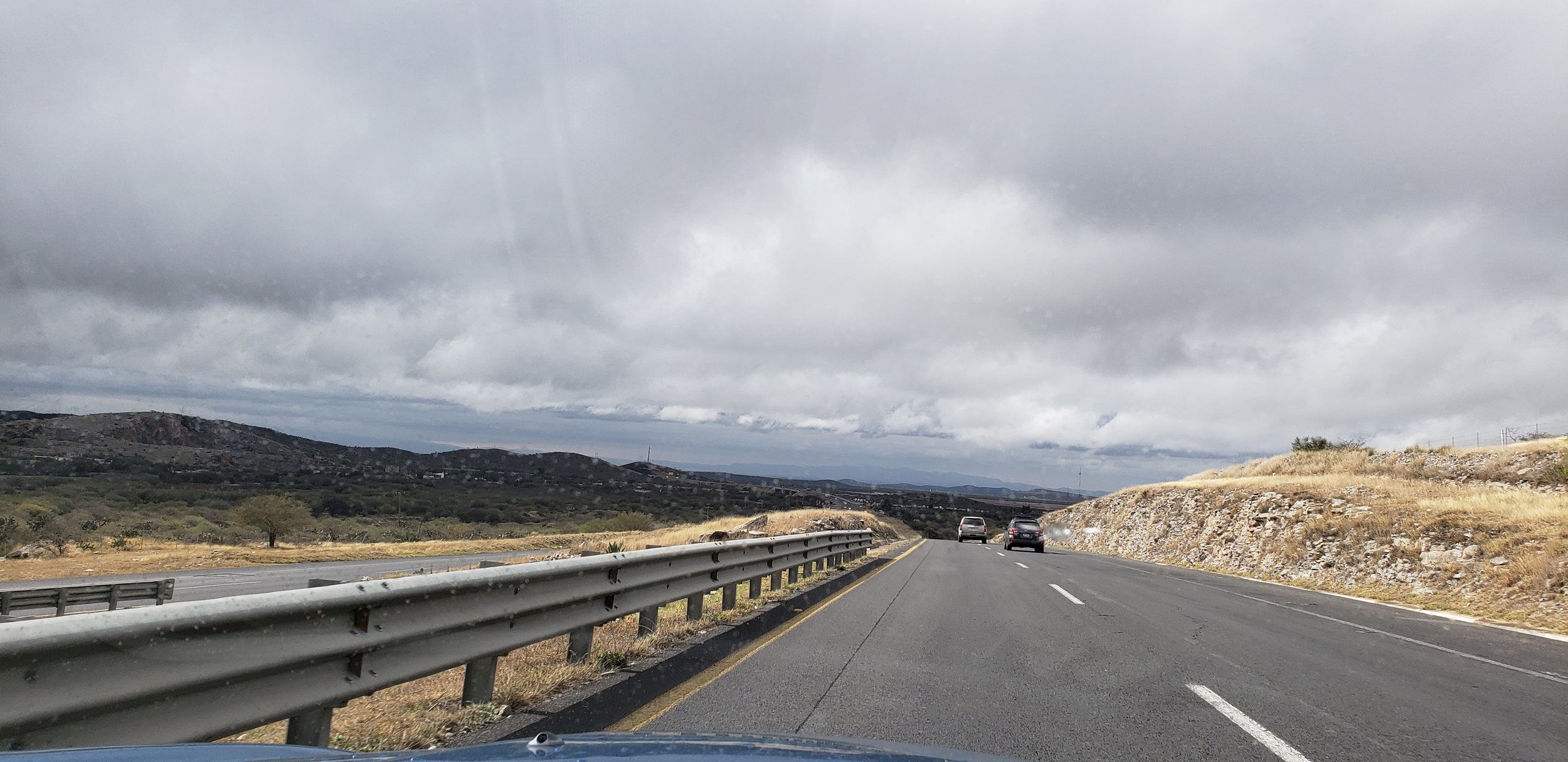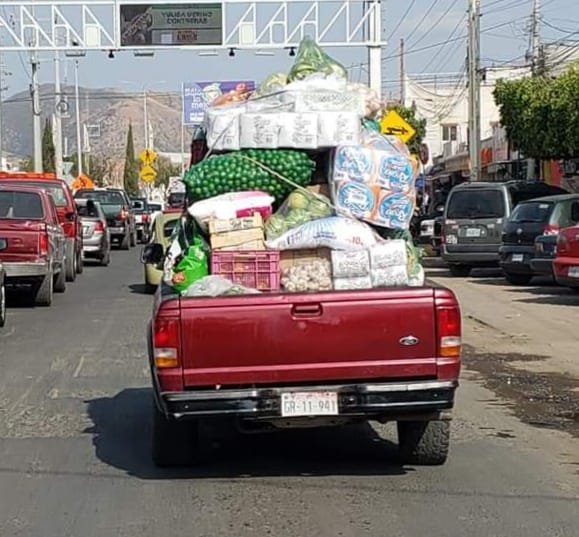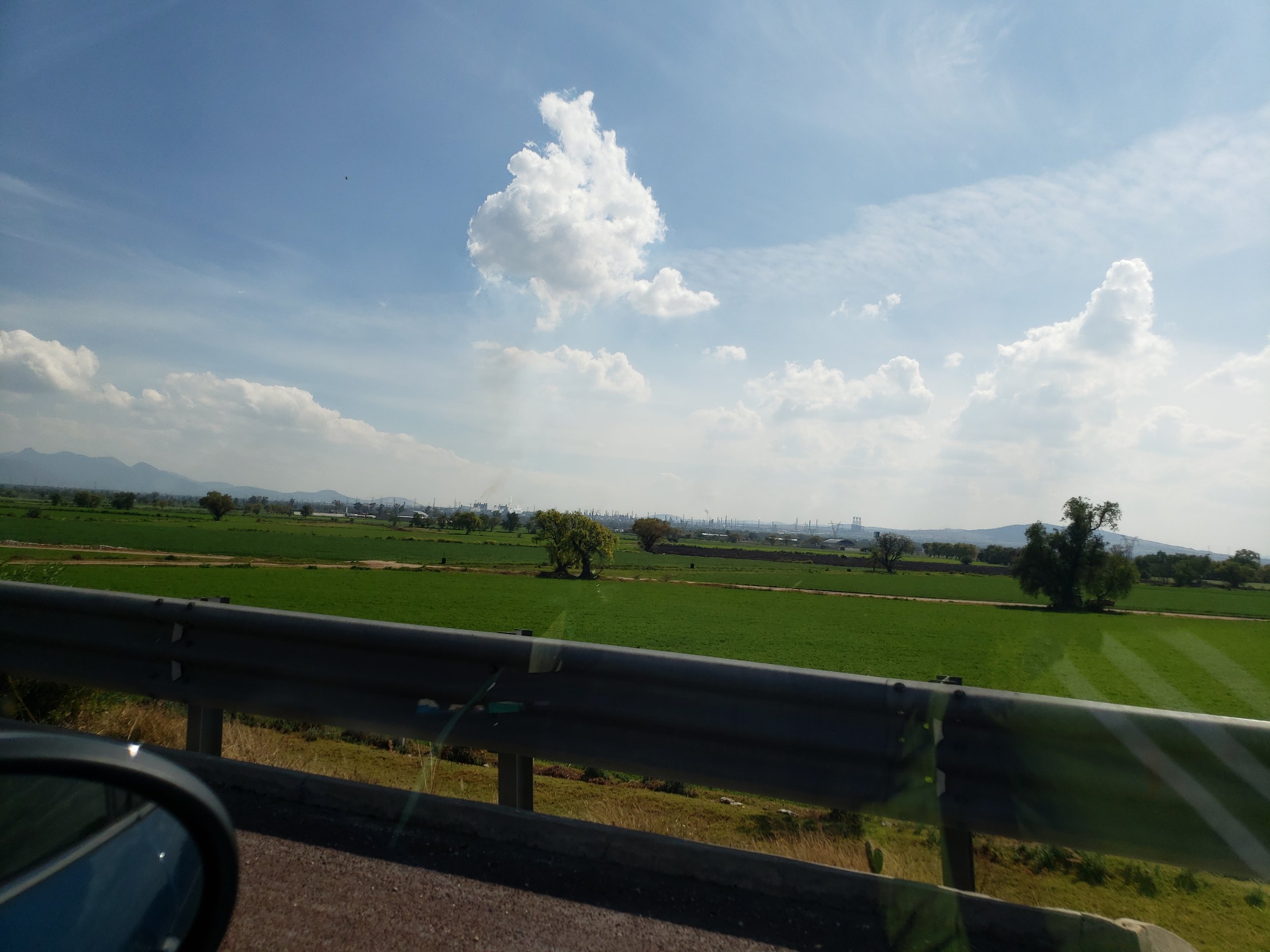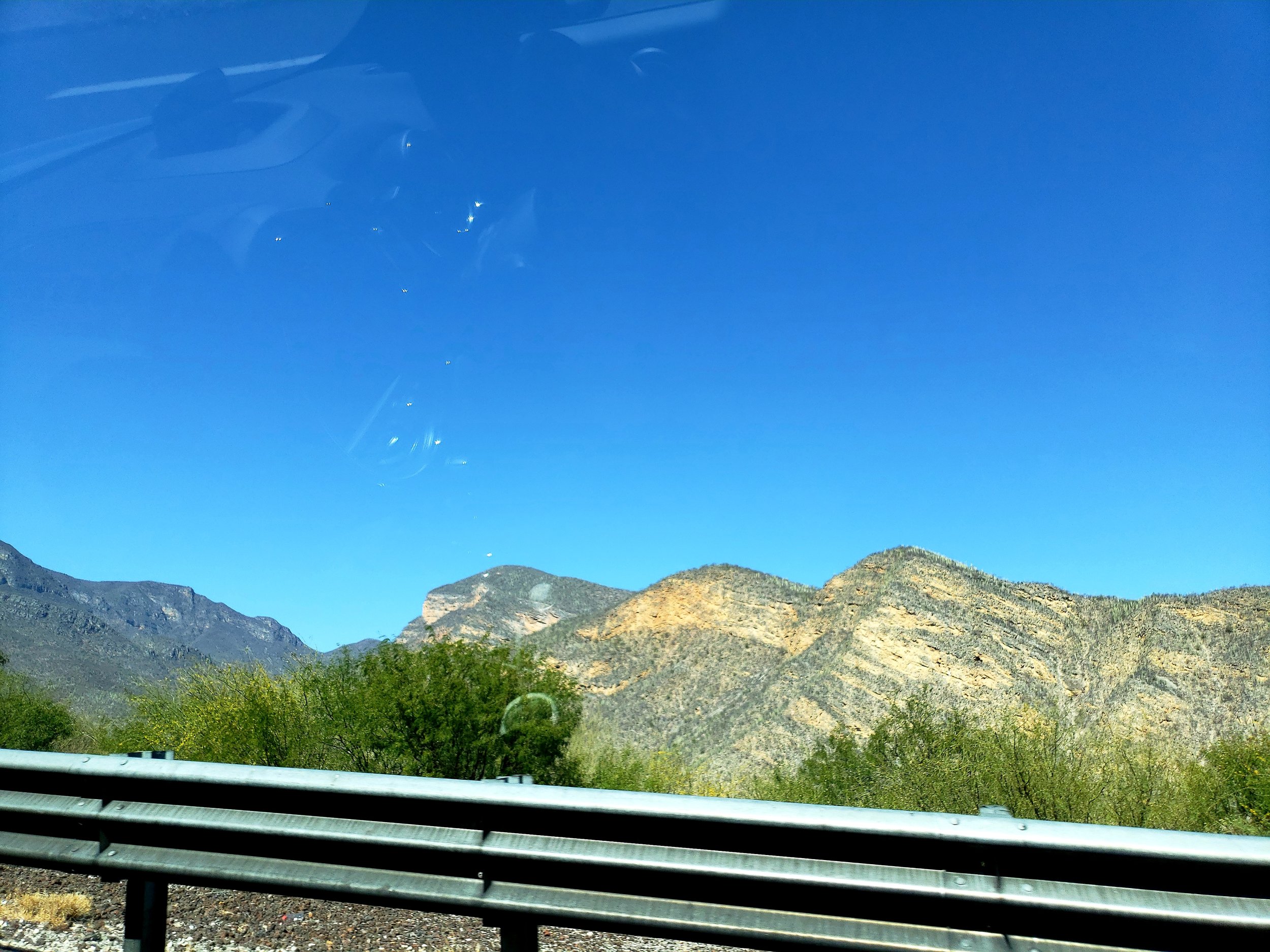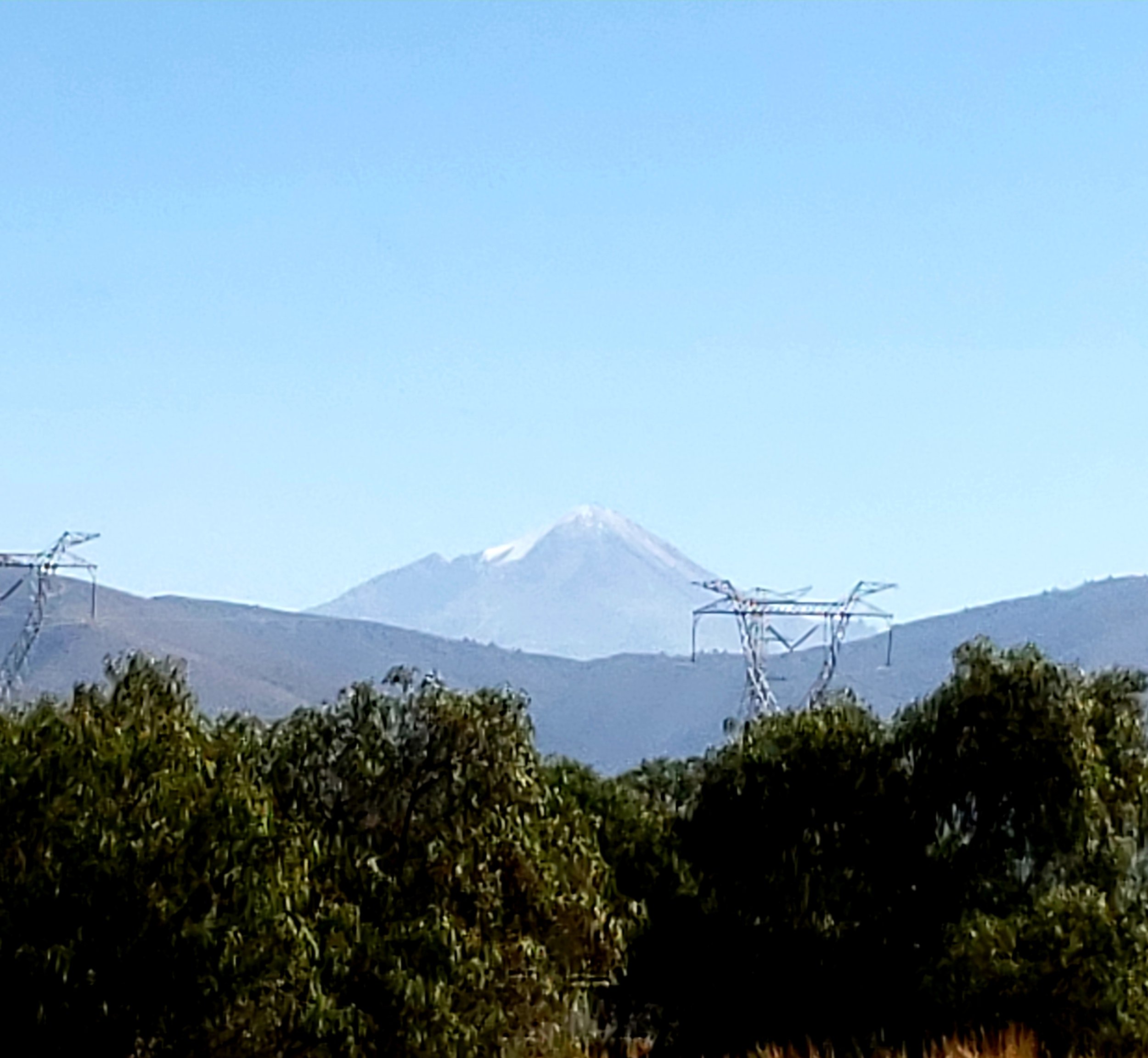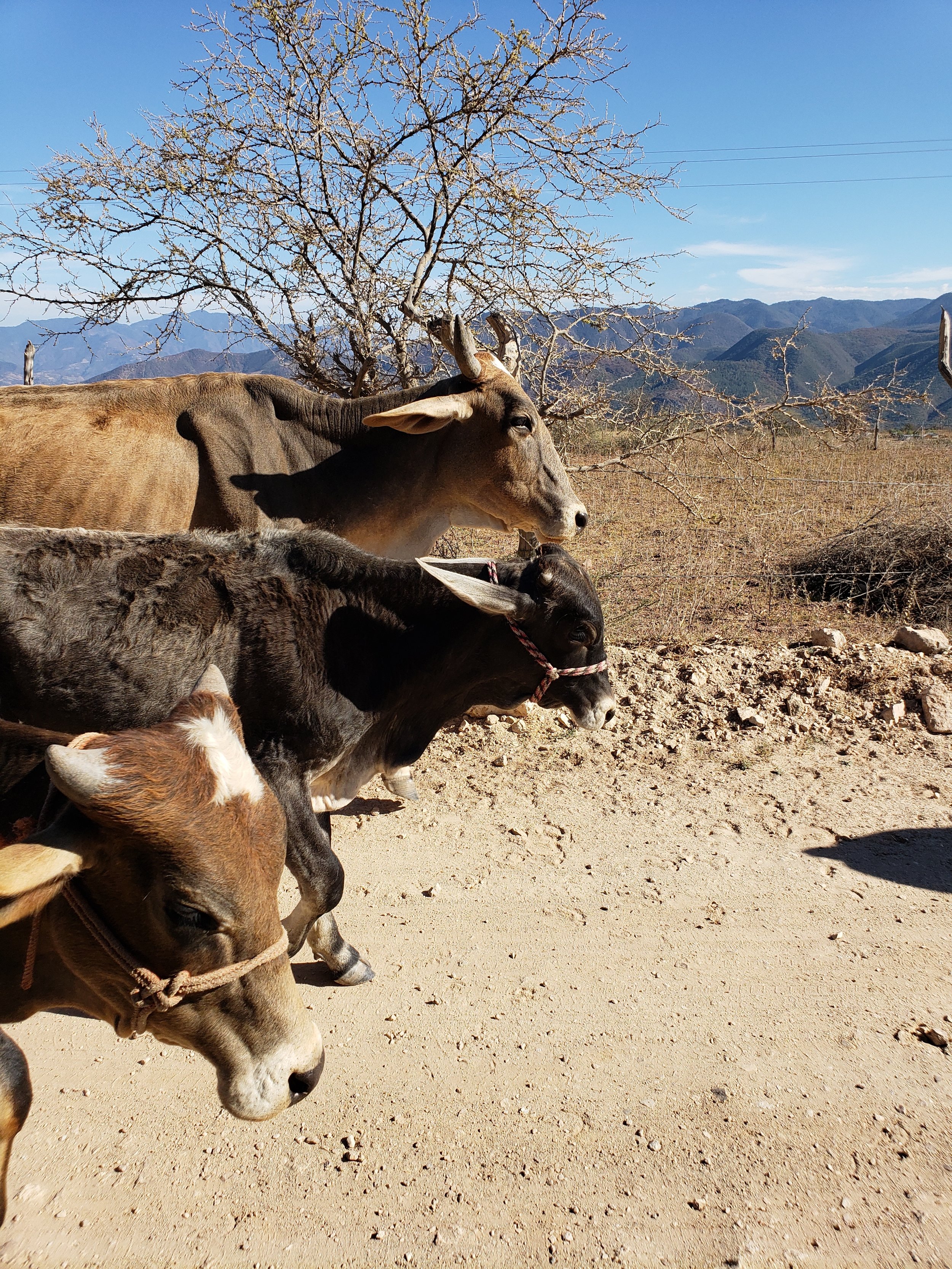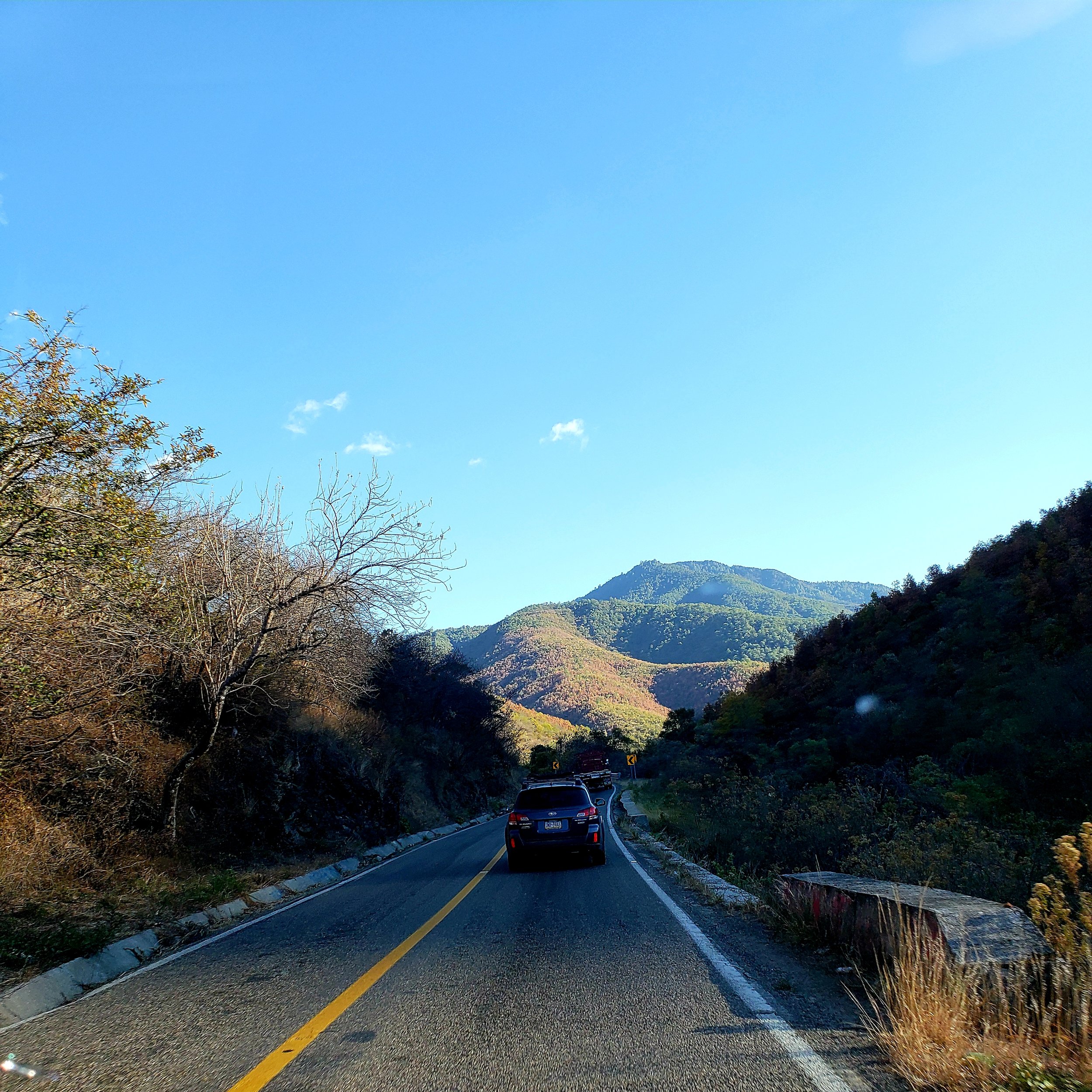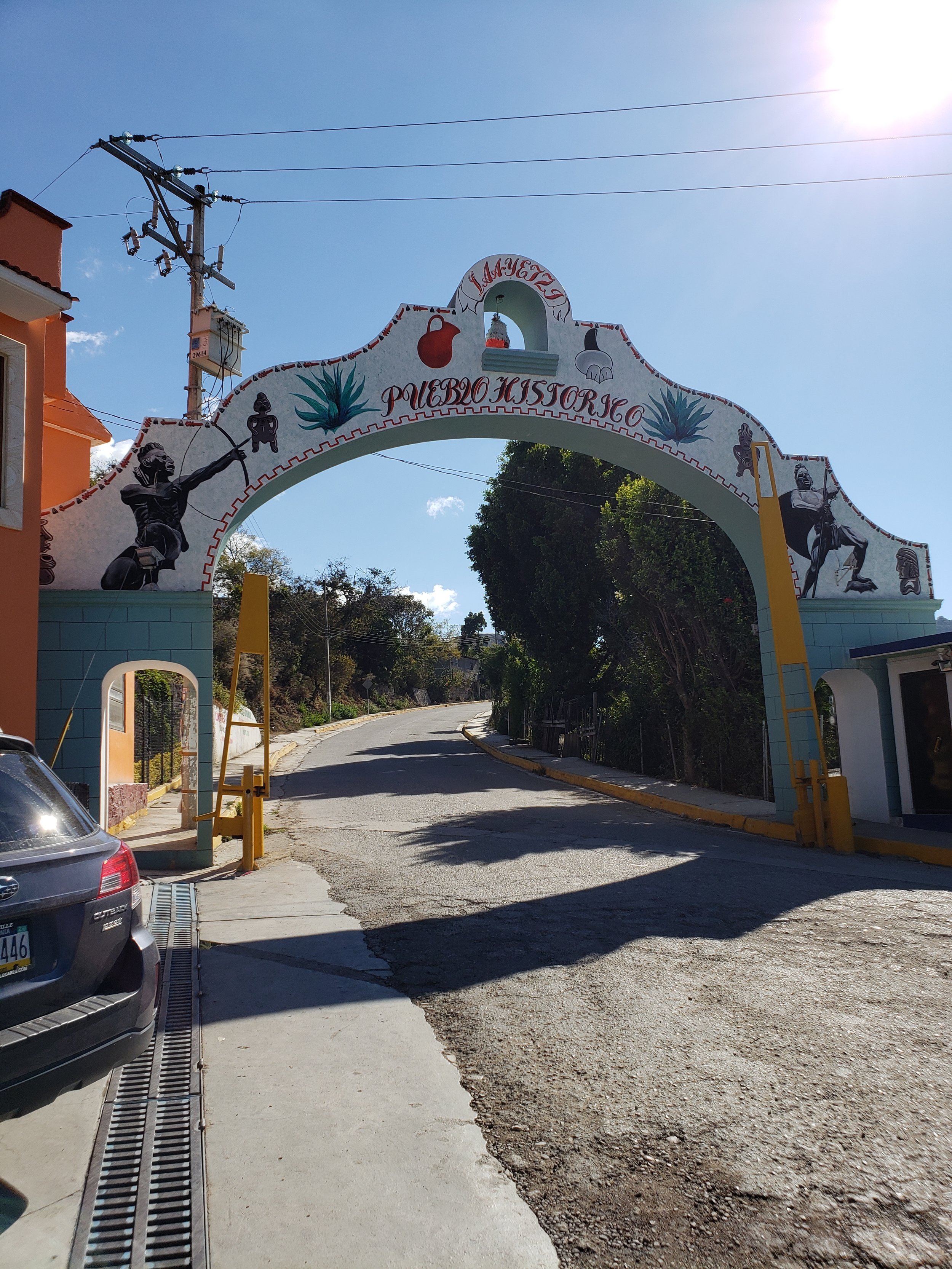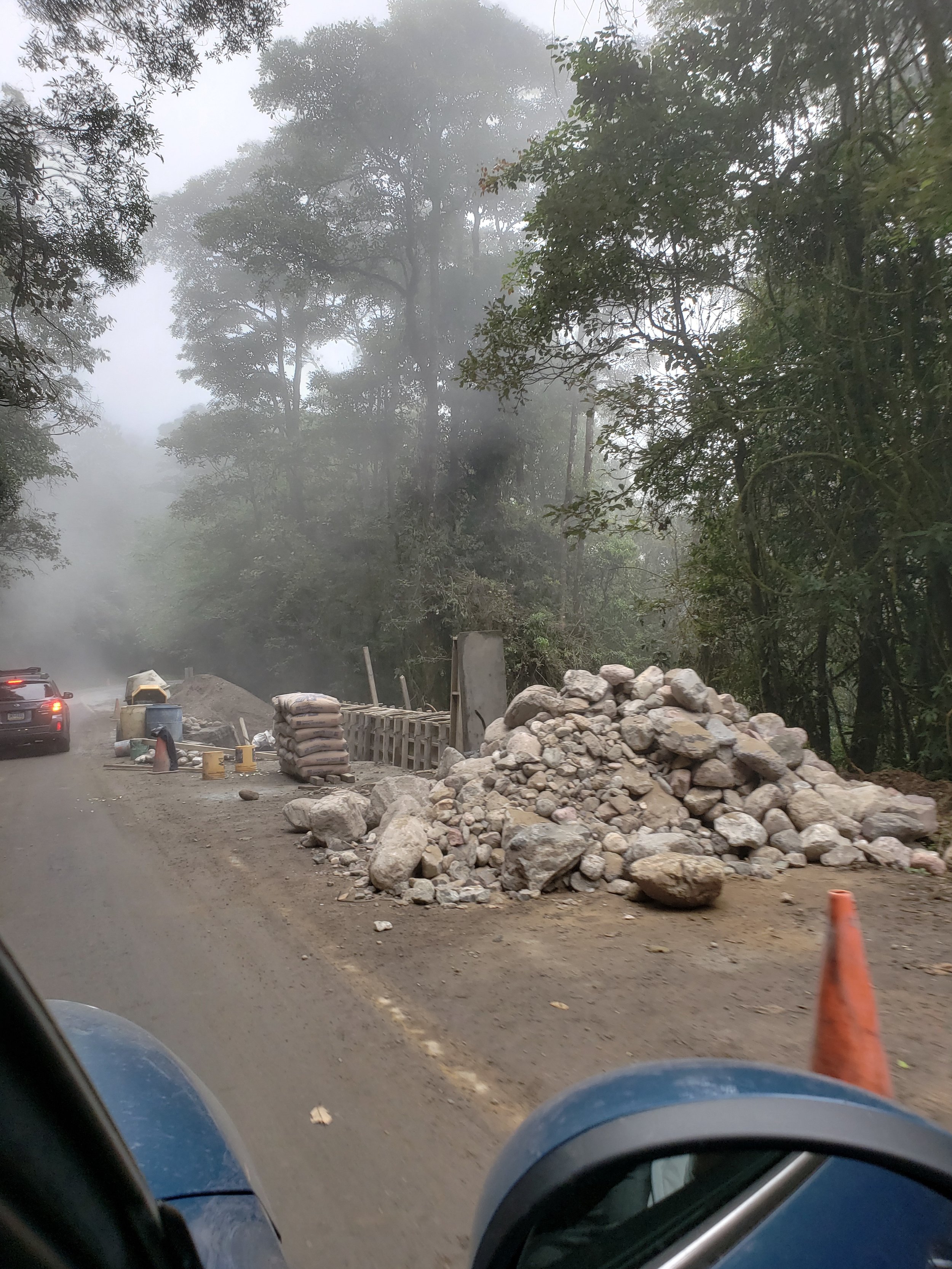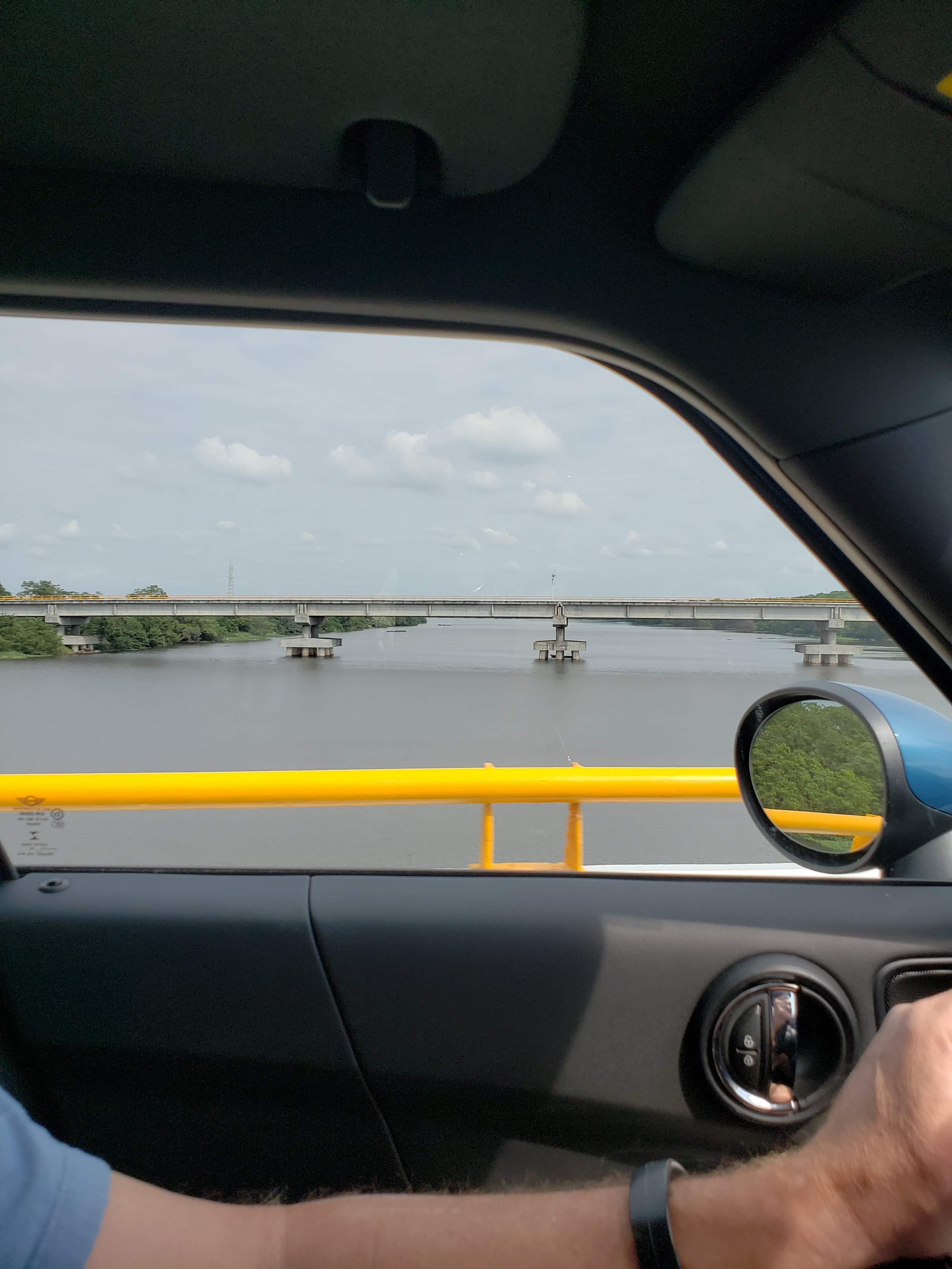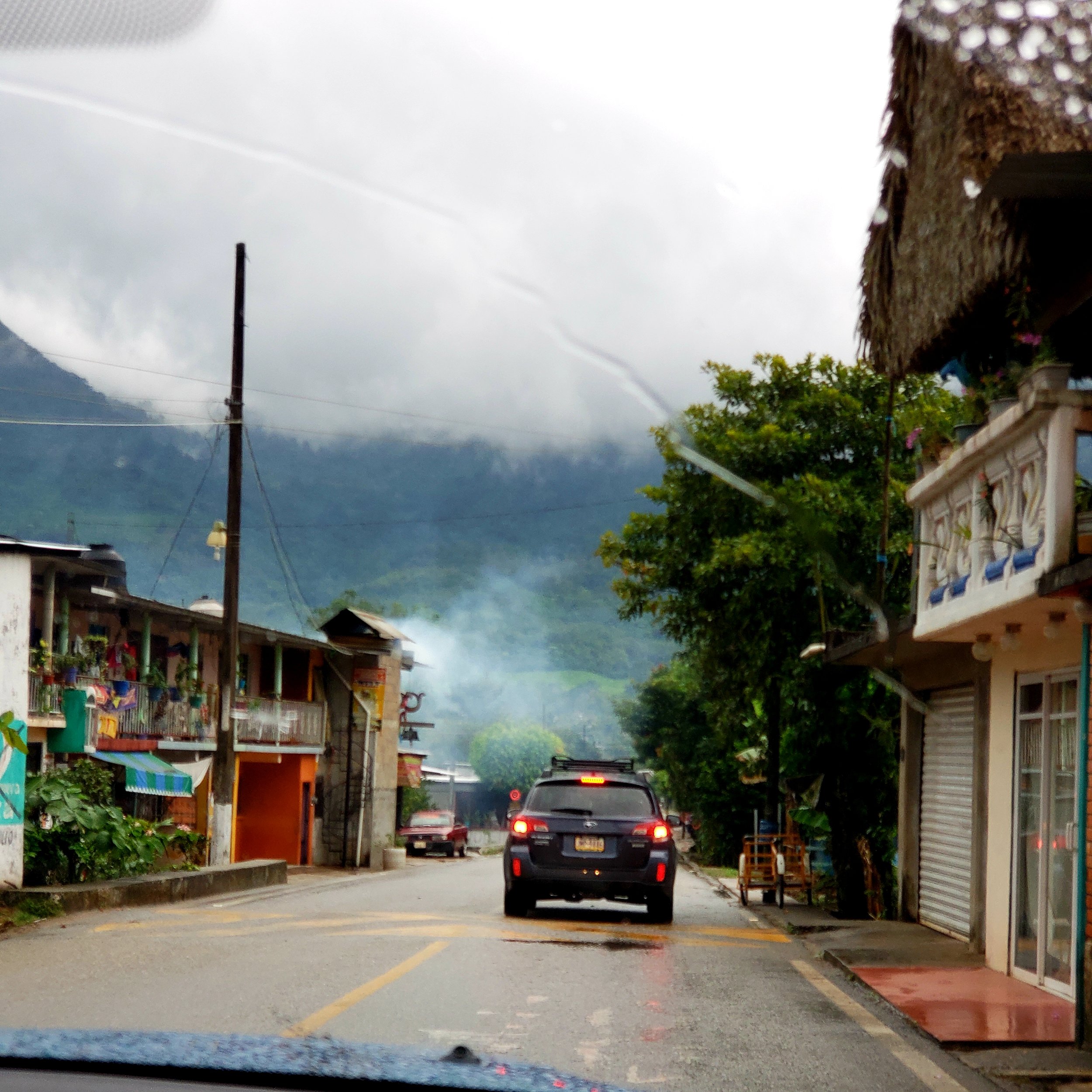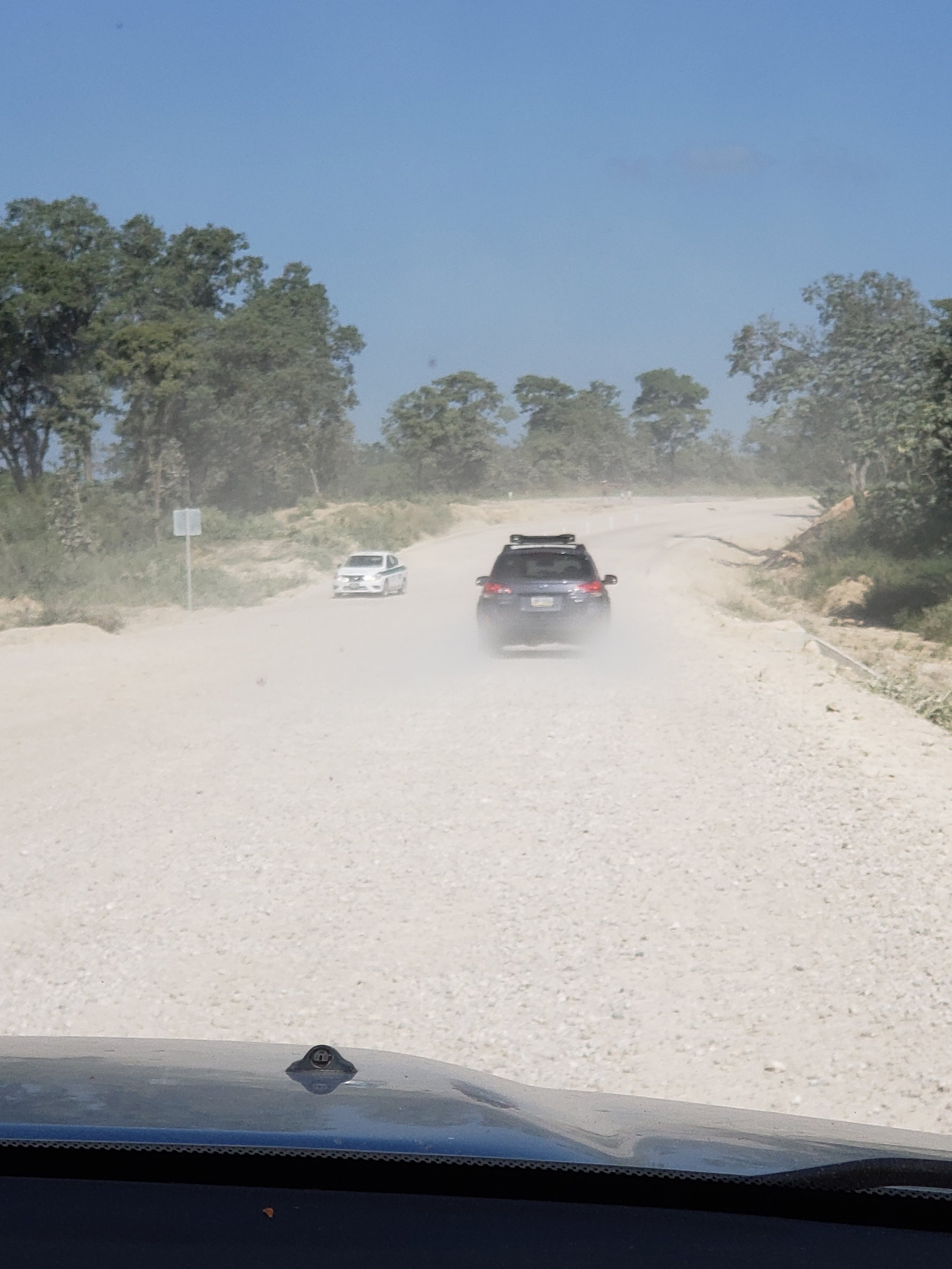Driving in Mexico
Driving in Mexico
At this writing we’ve made it as far as the northern coast of the Yucatan. We’re about 45 minutes north of the city of Merida and 20 minutes east of Progresso, Merida’s port. From a pure transportation standpoint, the trip has gone very smoothly. In other aspects it has been rocky, events that both Lydia and I will be detailing in subsequent posts.
Now, I want to address driving in Mexico, which, by in large, has been a pleasure.
Every time we tell someone down here that we drove from Charleston we see a genuine expression of surprise. Why? Because of all the scare stories in the U.S. media. The fact is that it was easy to cross the border. Took us about 20-minutes (we were first in line) at Laredo, and that time included having to deal with our leased car. If you’re going to drive, you are, in effect, importing a vehicle into Mexico. So they require a bunch of documents – paper only and in triplicate. First you have to establish ownership, which you do by presenting the original title. If you don’t have the title, and in many states you won’t have the title if you lease or finance your vehicle, you must present a notarized letter from the title-holder authorizing you to take the vehicle into Mexico for a specific period of time (dates are required). Now, I’ve written about this tribulation in another post, because a leased car presents special issues, and our Mini is leased through BMW Finance.
After ownership/permission has been established, you are required to make a deposit to the Mexican government, essentially an import duty. So if you sell your car while here, the government get its due. But, if you bring your car back before your permit expires (6 months) then you will receive a full refund. In our case, the duty was $400+ (can’t recall the exact amount).
Finally, you are required to provide proof of insurance. That is Mexican auto insurance that has all the necessary liability minimums. They don’t care about damage to your car, but they do, and should, care if you damage property in Mexico or hurt a Mexican citizen. We bought our insurance from Sanborn, but there are no shortage of companies that can provide what you need. Generally, the more expensive your car, the more the insurance cost. I think ours was around $700 for six months. And in our case, we had to have the car insured for the full replacement cost of the vehicle, as per BMW Finance.
Once the customs official has reviewed, reviewed again and stamped all of your papers, you receive a sticker for your windshield. This is your permit and you are now allowed to drive your car in Mexico.
Actual Driving
The physical act of driving in Mexico is pretty much the same as in the U.S. There are speed limits, yield signs, stop signs, roundabouts, one-way streets, you name it, Mexico has it. Unlike in the U.S., however, I suggest obeying the signs. Not only don’t you want trouble with the various authorities who patrol the roads, you also don’t want to get killed. So if you are one of those many Americans who don’t know that the left lane is for passing, WATCH OUT. If you don’t know that you have a rearview mirror, you’re in TROUBLE. If you think your car’s blinkers are a vestigial organ, I’m sorry of you. And if you prefer to drive at night DON’T.
In Mexico distance is measure in meters and kilometers. If the speed limit is 100 KPH, you can drive at 60 MPH. You can figure the rest from there.
Judging from the speed limits we’ve seen on this trip, and a few other surprises Mexico has in store for you, Mexico disapproves of speeders. Even on the largely empty toll roads (Cuotas) speed limits rarely exceed 110 KPH. Now, you might be tempted by the lead-footer who just passed you at 150 KPH, restrain yourself. This is not I-95. You’re a foreign national and you don’t need to be spending time in a Mexican jail. Grit your teeth and wave at that tiny little, Mexican Ford that just left you I the dust.
For the most part, the rules of the road are similar to ours. Although, Mexican drivers, in our opinion, tend to be more considerate and certainly more aware than we are in the U.S. This isn’t to say that all Mexican’s are good drivers, but there are a few rule quirks here that force you to be on your toes. For instance, on two lane roads, even those that are clearly striped, passing is rarely forbidden. Typically, the slower car in front will “drop a wheel” into the shoulder – watch out for bikes, motor bikes and pedestrians – and the faster car will pass, even if there is traffic coming in the other direction. It takes a little getting used to, and it absolutely requires that you use your rearview mirror, but if you hate getting stuck behind a slow driver on a two-lane road, in Mexico that doesn’t have to happen.
Another wrinkle comes when you want to turn left (across traffic) on a two-lane road. Rather than putting on your left blinker, hugging the center line and waiting for an opening, you turn on your left blinker and move to the right shoulder waiting for traffic to clear before turning. You only need to do this if there is someone behind you. It’s great because left turners don’t slow traffic, BUT you absolutely must be aware of what’s going on around you. I love it, but it will scare a lot of U.S. drivers.
Mexican Roads
We found Mexican roads to be a lot like South Carolina roads. Some are good, but many are in need of repair. The worst highways, we found, were near the US border. As we drove south from Nueavo Lardeo, the roads got better, meaning fewer teeth-rattling potholes. I suggest taking toll roads when possible. They are all over the country and tolls range from 25 cents to almost $10. Don’t try to save money by avoiding these roads, because alternative routes can take hours longer. We found that there wasn’t a lot of traffic between cities, except trucks. We also found, to be discussed in a future post, that the country is extremely mountainous. Truck and mountains are not always a pleasant combination.
Most of the roads we took from the border down to Puebla were multi-lane, like our Interstates and freeways. But south of Puebla on toward Oaxaca and east to Palenque, even the toll roads were often two-lane. The rules of the road regarding passing, make good two-lane roads fun to drive.
Mountains post driving dilemmas the world over and Mexico is no exception. The first part of the trip from Oaxaca to Palenque was on a narrow two-lane road through very high monutains. It was a lot like driving along Big Sur or on the Million Dollar Highway in Colorado, only it lasted much longer – about 4 hours.
Potholes and Topes
If you’ve driven at all in Mexico, say along the Riviera Maya, you know about potholes and topes. Topes can take many forms. Years ago, along 307 south of Cancun, you’d see heavy rope lines laid across the road to slow traffic. Today you might see plastic bumps or even large, round reflectors. But the tope we know and love is made of concrete, is a foot-and-a-half high and could be wide enough for a crosswalk. It is designed to slow you down, and if you miss one, you’re not likely to miss another. Topes are all over Mexico. They’re at intersections, crosswalks, state border crossings and right in the middle of nowhere, designed to slow you down at a Federales checkpoint (don’t be intimidated by the automatic weapons on display, soldiers and police will usually smile and return your wave).
Potholes are another thing entirely. They are unpredictable and potentially crippling to your vehicle. The frequency of bad potholes is the single biggest reason it’s not safe to drive at night. Don’t worry so much about the cartel getting you and focus on avoiding the hole in the road that will absolutely ruin your day.
Gas Stations, Graft and Corruption
If you’ve never been to Mexico then you probably don’t know about the historical problems tourists have had Pemex stations (the Mexican national oil company). In the past, and we’ve had this happen to us, attendants at Pemex stations have played fast and loose with the unsuspecting gringo. Meaning one of two scams: you had the attendant a bill and he gives you change for a smaller denomination and then disputes what you handed him. The second scam involves not zeroing out the pump before starting to pump. This was so bad a while back I just dreaded getting gas. You had to get out of the car, purposely inspect the pump and hand over the money while announcing each denomination. It was embarrassing because you were assuming that every attendant was guilty.
I am very pleased to say that, so far (and we haven’t hit Quintana Roo yet) we have no incidence of scamming. In fact, in every case, the attendant has pointed out that the pump is at zero. And there have been no issues with change. But I do suggest that you always get out of the car before pumping begins and DO NOT use credit cards at gas stations. I should also note that Pemex not longer has a monopoly. We saw both Shell and BP stations. We also noted that gas prices do very a little bit by region. That did not use to be the case. Remember, gas is priced by the liter, and, unlike most everything else, it’s not cheap.
Finally, I’d like to address the fear, at least my fear of graft. Before leaving, we heard many stories of police shakedowns. They’ll stop you in the middle of nowhere for no reason and you have to pay them off. We had no such experience. Maybe we were lucky, but we were only stopped once, outside of Campeche at a checkpoint, and the police were very polite. Our traveling partners, Bob and Carolyn, were also stopped at the same checkpoint later in the day, and they figure it was because neither Pennsylvania or South Carolina have front license plates. Could be.
My message, though, is if you want to see and experience a great and beautiful country from the ground, don’t let any misgivings about driving stop you!

